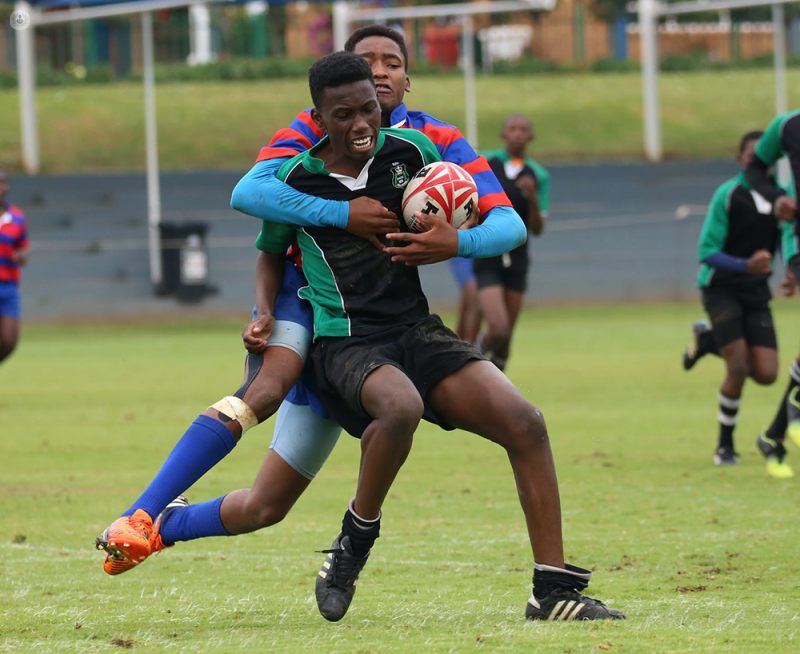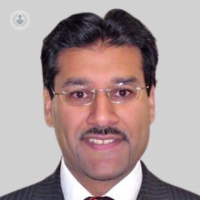ACL injury: non-surgical vs. surgical treatment
Written by:An ACL injury is a tear or sprain in one of the main ligaments in the knee. It is one of the most common types of knee injuries as the ACL can be torn if your knee and lower leg are twisted, for example, if you were to land incorrectly from a jump. One of our expert consultant orthopaedic surgeons Mr Amer Khan explains everything you need to know about an ACL injury.

What is the ACL?
The anterior cruciate ligament, or ACL, is one of the major ligaments of the knee. It passes within the knee from the front of the tibia (shin bone) backwards, upwards and outwards (laterally) attaching to the medial (inner) side of the lateral femoral condyle of the femur (thigh bone). It prevents the tibia from sliding out in front of the femur. It also acts with other ligaments of the knee to stabilise the knee in rotation.
What causes an ACL injury?
An ACL injury typically is a pivoting injury that occurs when the knee is forcefully twisted with the foot planted (fixed) on the ground. The ACL often tears with an abrupt change in direction but may occur when a deceleration force crosses the knee. It may also occur with forceful hyperextension (the knee suddenly going beyond straight) or forceful flexion (the knee suddenly bending excessively) such as falling onto a flexed knee.
Activities involving changing direction rapidly, stopping suddenly, slowing down abruptly while running or suddenly stopping, incorrect landing from a jump, and direct contact or collision, such as a football tackle can also cause injury to the ACL. Common sports in which an ACL may be injured include football, netball, basketball, skiing and rugby.
During an ACL injury, you might feel a tear or hear a “pop”. The knee tends to swell rapidly as it fills with blood (haemarthrosis) and often feels unstable with difficulty in weight-bearing. Most people are unable to resume the activity and may require some help off the “pitch”. As the swelling subsides patients may complain of ongoing instability, the knee feeling “disconnected”, “wobbly” or “not right” with regular giving way.
How is an ACL injury diagnosed?
Diagnosing an ACL tear is made by a patients symptoms and mechanism of injury, performing a physical examination of the knee and diagnostic tests, typically an MRI scan. Rarely X-rays, stress tests of the ligament and occasionally arthroscopic assessment are performed in specific circumstances.
How is an ACL injury treated?
An ACL tear (rupture) is a significant knee injury and is often associated with other intra-articular injuries. Treatment options include both non-surgical and surgical methods and are tailored to a specific individual's needs. Factors considered include activity levels, sporting involvements and goals, medical fitness and to a lesser extent age. Let's look at the options:
Nonsurgical treatment
Initial treatment consists of controlling pain and swelling through rest, ice, compression, and elevation (RICE protocol). Physical therapy is often recommended to improve knee motion and strength. For a short period, a knee brace may be needed to help immobilise the knee.
Some patients may be able to regain a functionally stable knee without surgery by improving their proprioception (reflexes and joint position awareness) and strengthening their thigh and calf muscles. However, conservatively managed patients may continue to avoid certain rotational activities and may be unable to return to their pre-injury level of exercise or sport.
Those involved in pivoting sports or with a particularly active lifestyle may require surgery to safely return to sport/activity.
Surgical treatment
The clearest indication for surgery is in patients with the knee frequently giving way. Recurrent episodes of instability may potentially damage the articular cartilage (shiny surface ), menisci (shock absorbers) or other ligaments within the knee resulting in poorer long-term outcomes.
The usual surgery for an ACL tear is an ACL reconstruction, which replaces the torn ligament with a graft (tissue taken from another place). This may be from the same patient (autograft) and usually is either the hamstring tendons, bone patella tendon or the quadriceps tendon.
Allograft (taken tissue from a donor who has passed away) may be also be used with advantages and disadvantages for both. This should be discussed with your surgeon in detail before surgery.
In a very small group of patients with specific indications, the ACL may be repaired by reattaching it to the femur or tibia if it has detached (pulled off). This requires a specific skill set and should be discussed with your surgeon to see whether this is appropriate or applicable.
What happens during surgery?
ACL reconstructive surgery is performed with an arthroscope (special camera via keyhole surgery) using small incisions. The ruptured ligament is removed and tunnels (holes) in the bone are drilled to accept the ACL graft. This graft which replaces the patient’s old ligament is prepared to take the form of a new tendon and passed through the bone tunnels. The new tendon is then fixed into the bone with special mechanical devices to hold it in place while the ligament heals into the bone (usually three to six months).
The wound is closed with absorbable sutures and a dressing is applied. As surgical techniques have improved significantly over the last decade, complications are reduced and recovery much quicker than in the past.
Following ACL reconstruction, a rehabilitation program with physiotherapy is started to help you to ultimately return to sport and a wider range of activities. Many patients are able to begin a phased return to contact sports by nine months postsurgery. This is dictated by patients meeting milestones and under the supervision of the surgeon and specially trained physiotherapist.
Book an appointment with Mr Khan via his Top Doctors profile today. Can’t make it in person? He is also available for a video call using our e-Consultation tool, which is also found on his profile.


